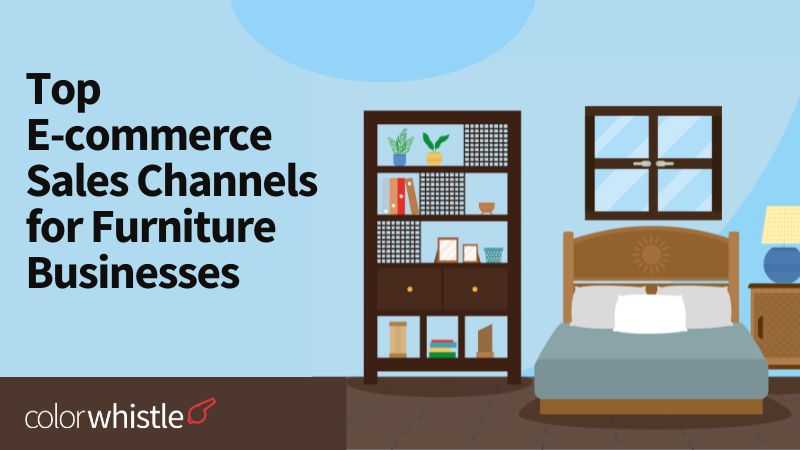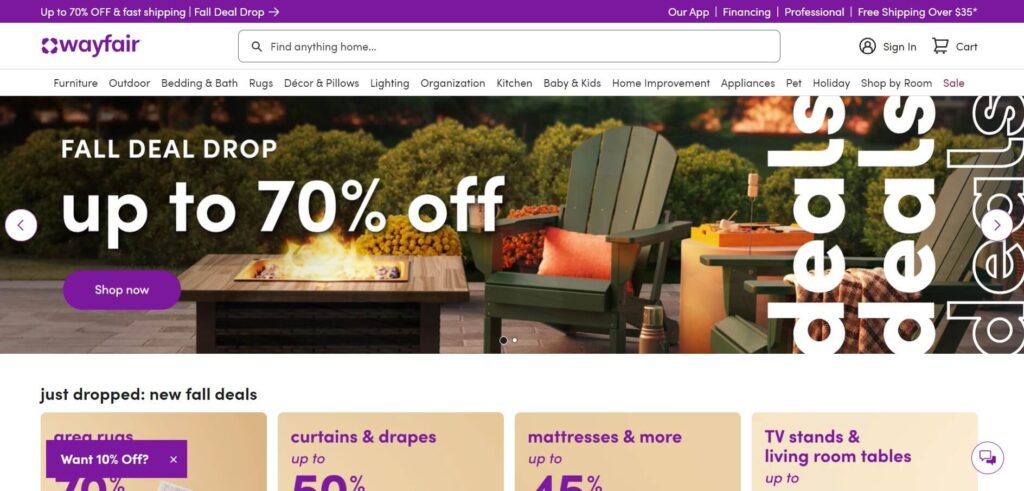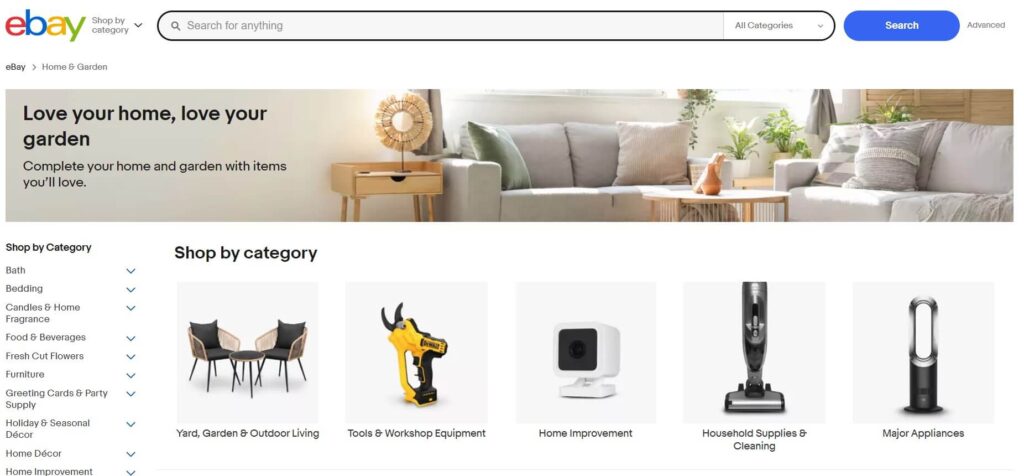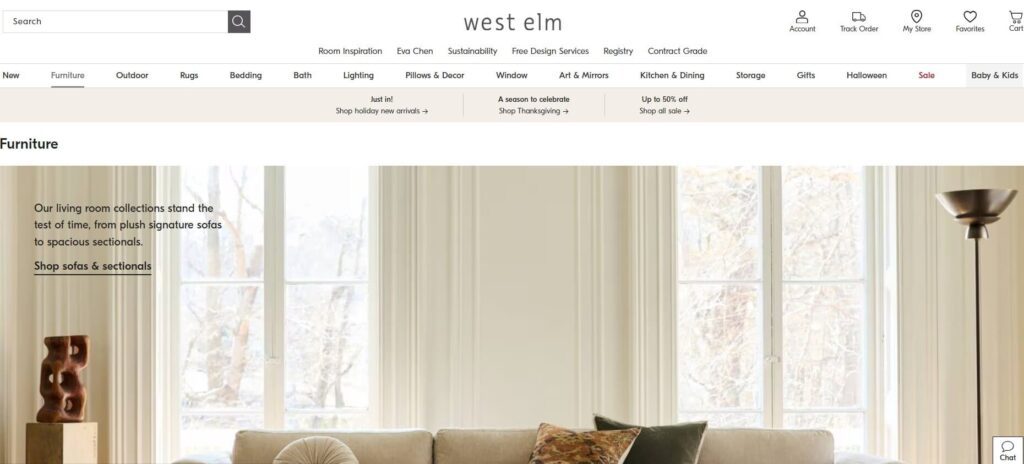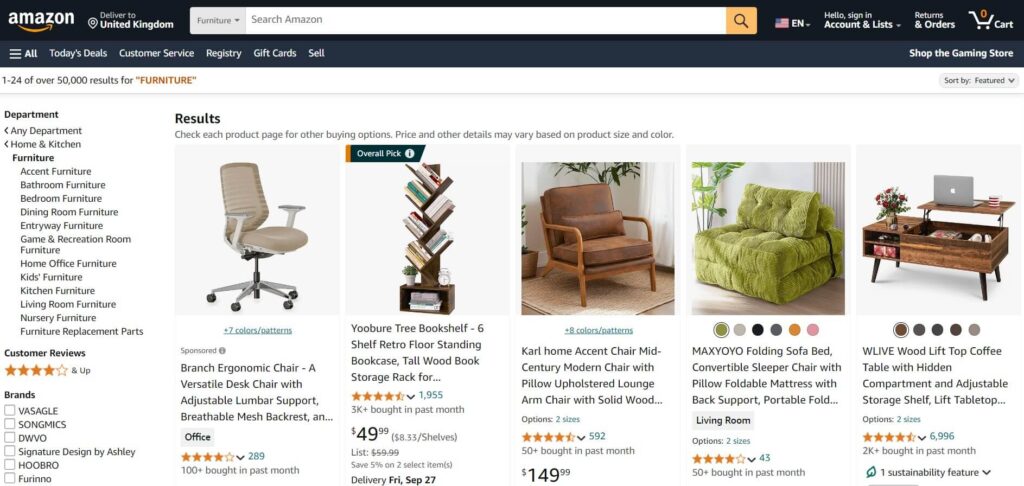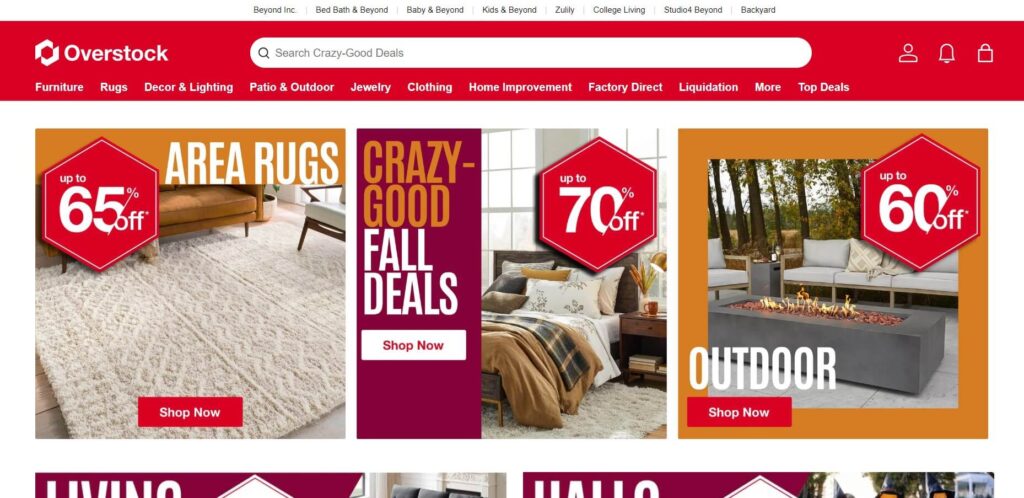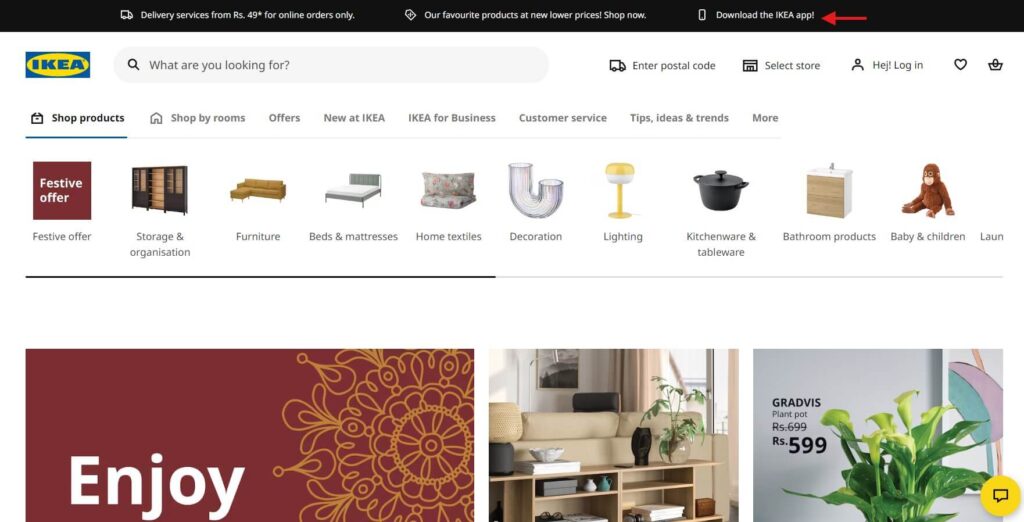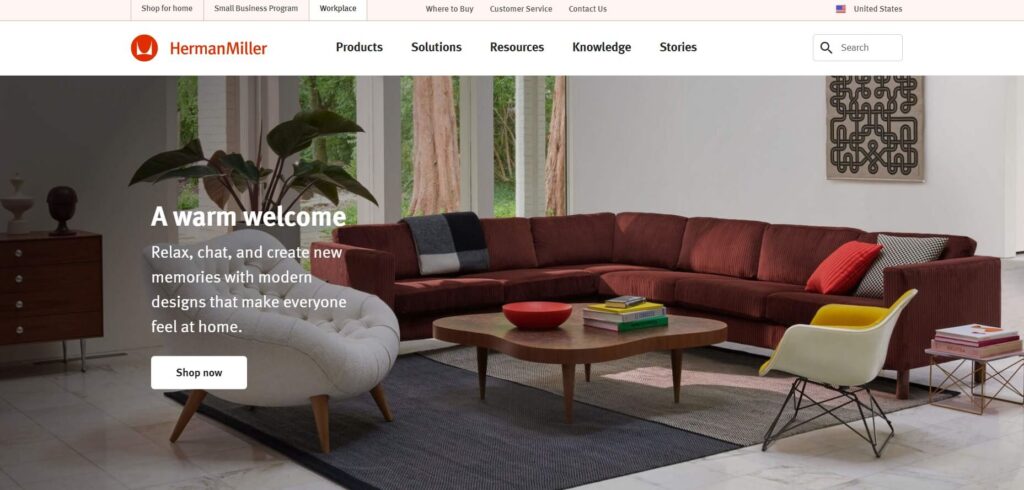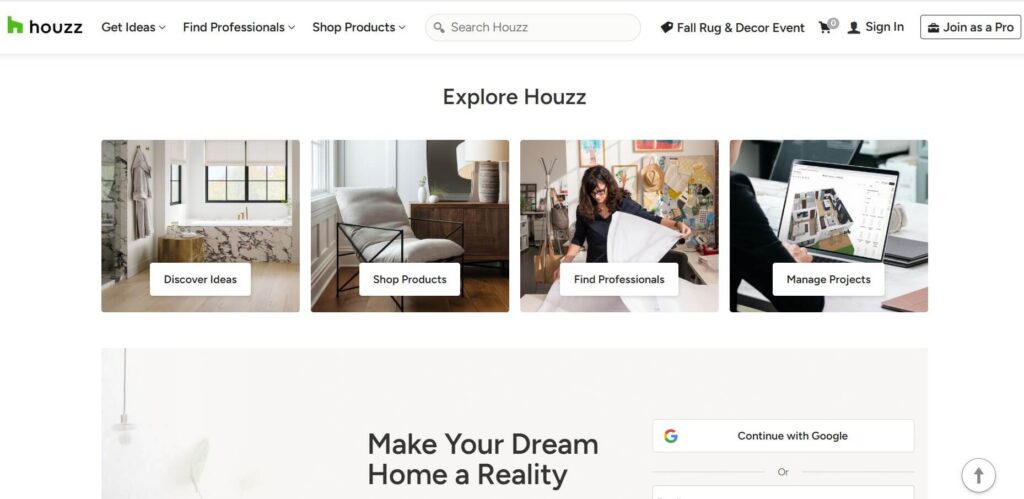As the furniture industry rapidly shifts toward e-commerce, businesses need to depend on different sales channels to maximize their reach and profitability. Whether you’re a new brand or an established company, finding the right Furniture e-commerce sales channels can determine success in the competitive furniture market. In this guide, we’ll explore the top e-commerce sales channels for furniture businesses, covering how they work, examples of successful sites, and how these channels help brands grow.
To help you improve your online presence, take a look at our Shopify Plus Store Development Guide: A Step-by-Step Approach for 2025. This guide will help you improve your ecommerce website development service so your store can succeed.
10 Best Furniture e-commerce sales channels
1. Online Store (Direct to Consumer)
An online store is the most traditional and effective way for furniture businesses to sell directly to customers. With a direct-to-consumer (DTC) model, companies have full control over their branding, customer experience, and pricing strategies. This channel allows furniture businesses to establish a unique presence and build long-term customer relationships. Platforms like Shopify and Shopify Plus enable businesses to easily set up and manage their online stores, providing customizable templates and integrated payment solutions.
Example: Article
How it helps: Article is a prime example of a furniture business using a DTC model. By cutting out middlemen and selling directly through their online store, Article offers modern, stylish furniture at competitive prices. The online store’s easy navigation, detailed product descriptions, and lifestyle imagery create a good shopping experience, helping customers make informed decisions. This approach helps businesses control their brand story and increase profit margins.
2. Modern Marketplaces
Modern marketplaces are online platforms that connect sellers and buyers, providing a large, engaged audience for furniture businesses. These platforms often have integrated payment systems, shipping solutions, and customer support, making it easier for businesses to scale.
Example: Wayfair
How it helps: Wayfair is one of the largest online destinations for furniture, offering products from thousands of suppliers. By listing products on Wayfair, furniture businesses can tap into an established customer base, reducing the costs of marketing and driving significant sales volume. Wayfair’s user-friendly interface, customer reviews, and easy checkout process contribute to a higher likelihood of conversion for listed products.
3. Traditional Marketplaces
Traditional marketplaces refer to both physical and online platforms where multiple sellers list their products, often without the sophisticated e-commerce functionalities that modern marketplaces offer. These marketplaces provide access to a more general audience. Using Shopify, businesses can manage listings across traditional marketplaces, ensuring consistent branding and inventory control.
Example: eBay
How it helps: eBay allows businesses to reach a global audience by listing furniture in both auction-style and buy-it-now formats. eBay offers a large customer base and tools for businesses to gain exposure, especially for vintage or rare furniture pieces. Listing on traditional marketplaces can increase a brand’s visibility and sales volume.
Also Read
4. Retail
Retail e-commerce combines the advantages of having a physical showroom or brick-and-mortar store with an online sales platform. Furniture businesses that already have a retail presence can broaden their reach by offering their products online. Shopify’s POS system allows businesses to integrate online and offline sales, ensuring a cohesive customer experience.
Example: West Elm
How it helps: West Elm is a furniture retailer that also sells through its online store. Their digital platform allows customers to browse, purchase, and arrange for home delivery, providing the convenience of online shopping with the trust and reassurance of an established retail brand. By maintaining a retail and online presence, furniture businesses can reach local customers while also expanding their geographical market.
5. Wholesale
Wholesale involves selling furniture products in bulk to other businesses, such as retailers or large corporations. This channel allows manufacturers or brands to move large quantities of products, often at lower margins but with the benefit of steady, high-volume orders. Shopify Plus provides advanced B2B features, enabling businesses to manage wholesale orders and customer-specific pricing effectively.
Example: MarketTime
How it helps: MarketTime is a platform that connects furniture wholesalers with buyers. By partnering with wholesale platforms, furniture businesses can sell in bulk to retailers looking to stock their shelves, reducing the need for direct customer acquisition. This model allows businesses to focus on production and fulfillment while ensuring a consistent sales pipeline.
6. Resellers
Reselling involves third parties purchasing products from manufacturers or brands and selling them at a markup. Resellers can be a powerful sales channel for furniture businesses looking to offload inventory quickly or reach different markets.
Example: Amazon (Third-party sellers)
How it helps: Many resellers on Amazon buy furniture from manufacturers and resell it under their own brand or the original brand. For manufacturers, this allows for broader distribution without the need for direct customer engagement. Resellers can help furniture businesses expand their footprint, even in markets where they don’t have a direct presence.
7. White Label
White-label products are produced by one company but sold under another company’s brand. In the furniture industry, businesses that specialize in manufacturing can partner with other companies to sell products without the need for their own branding. Shopify supports white-label sales by allowing manufacturers to create multiple storefronts, each with a different branding approach.
Example: Overstock
How it helps: Overstock often partners with manufacturers to sell furniture under different labels. This arrangement allows businesses to focus on manufacturing while leveraging Overstock’s brand and customer base. White labeling helps businesses scale quickly without the investment in marketing and branding, as the partner company handles those aspects.
8. Mobile Apps
With the rise of mobile commerce, having a mobile app for selling furniture can significantly increase customer engagement and sales. Mobile apps provide a convenient way for customers to browse, shop, and make purchases directly from their smartphones. Shopify offers mobile-friendly templates and app integrations that enhance the shopping experience for brands like IKEA.
Example: IKEA
How it helps: IKEA’s mobile app allows customers to browse their extensive furniture catalog, check availability, and make purchases on the go. The app also integrates with augmented reality (AR) features, enabling customers to visualize how furniture will look in their space. By offering a mobile shopping experience, businesses can capture a growing number of mobile-first customers and create a seamless shopping journey.
Also Read
9. B2B Sales
B2B (business-to-business) sales involve selling furniture to other businesses, such as office spaces, hotels, or restaurants. This sales channel is ideal for furniture businesses that specialize in large-scale furnishing projects. Shopify Plus can help B2B sellers manage large orders, set up custom pricing, and create dedicated B2B storefronts.
Example: Herman Miller
How it helps: Herman Miller, known for its high-quality office furniture, engages in B2B sales by supplying furniture to businesses and organizations. By offering specialized furniture solutions, Herman Miller targets corporate clients with high-volume orders. B2B sales often result in long-term contracts, providing consistent revenue streams for furniture businesses.
10. Partnerships
Forming partnerships with complementary businesses can create new sales opportunities. For example, a furniture company could partner with an interior design firm, a home improvement store, or a real estate agency to offer exclusive furniture deals.
Example: Houzz
How it helps: Houzz is an online platform for home remodeling and design, which partners with furniture businesses to offer products directly through the site. By partnering with Houzz, furniture businesses can reach homeowners who are actively seeking to furnish or remodel their homes. These partnerships increase exposure to a targeted audience, resulting in higher-quality leads and conversions.
Wrapping up
Choosing the right e-commerce sales channels is essential for the growth and sustainability of a furniture business. Whether through direct online stores, modern or traditional marketplaces, wholesale arrangements, or innovative mobile apps, each channel offers unique advantages. Brands that diversify across multiple platforms not only increase their sales opportunities but also build a more resilient business model. With a combination of these channels, furniture businesses can tap into a broader customer base, drive revenue growth, and stay competitive in the evolving digital landscape.
If you’re looking to develop your Shopify eCommerce store, ColorWhistle has a dedicated Shopify development team ready to assist. Contact us at +1 (919) 234-5140, our experts are here to guide you every step of the way.
What’s Next?
Now that you’ve had the chance to explore our blog, it’s time to take the next step and see what opportunities await!

